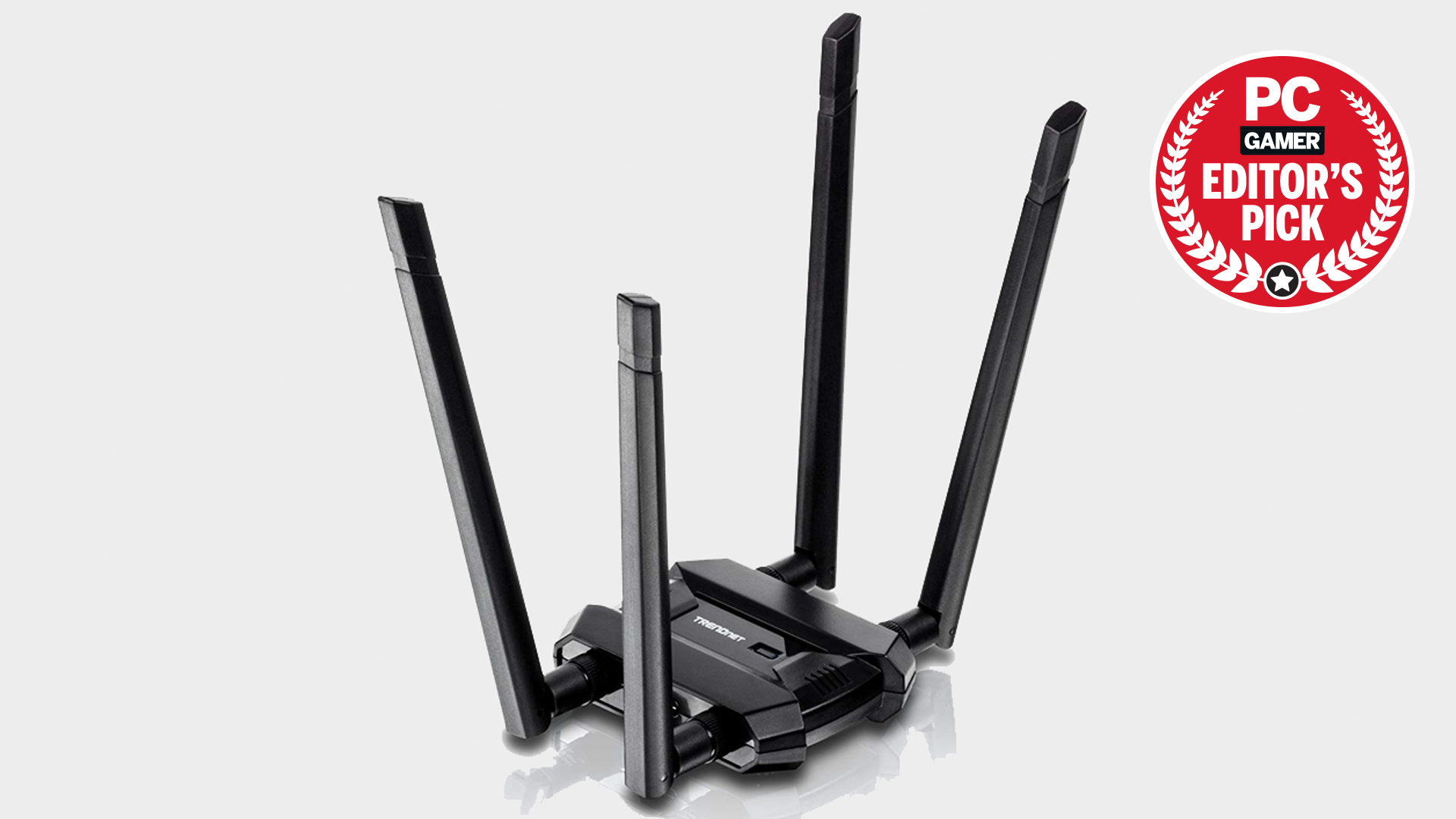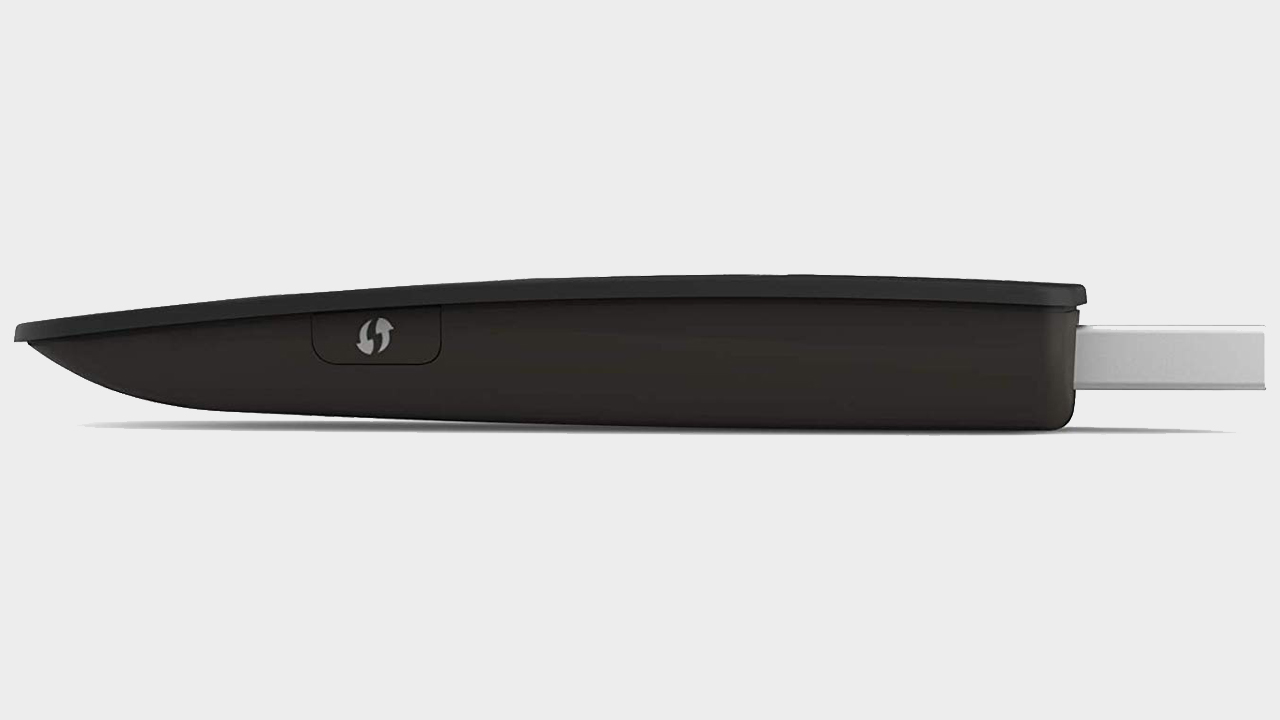The best USB Wi-Fi adapter has one crucial job. It makes sure you stay connected to the internet with little to no disruption. Whether you stream movies from Netflix or play games online, maintaining a solid Wi-FI signal is one of those things we don’t think about but could ruin your night if something goes awry.
So, if you live a wireless life, a good USB Wi-Fi adapter is a must-have, especially if you have a PC with a motherboard that lacks a wireless card. This plug-and-play solution can save you a lot of money if you’re just not ready to upgrade yet.
A wired connection will give you the best stability and throughput in a perfect world, especially when paired with the best gaming router. The reality is, for many folks, the idea of running an ethernet cable down a flight of stairs or through the kitchen is not super appealing nor safe.
If you’re looking to minimize cable clutter in other areas, the best wireless gaming keyboards or wireless headsets should be your next stop. Together, we, too, can build a wireless future.
Best USB Wi-Fi adapters



There are nano adapters at the tiny end of the scale, and at the opposite end is the Trendnet TEW-809UB. This networking adapter tosses portability out the window for the faster AC1900 (N600, AC1300) speeds and serious antennas—four, to be exact, all positionable with a strength of 5 dBi each. There is only a driver provided, but no software. Instead, Windows is in control of the networking duties. The adapter does not support MU-MIMO but does support Beamforming.
In use, the Trendnet TEW-809UB is stable and fast. It puts its antennas to good use, beating every other adapter tested on our wireless fringe location testing—on both the 2.4GHz and 5GHz bands. This is an excellent solution if you’re using Wi-Fi in a challenging situation with a weak signal.



When it comes to the best gaming routers, there are few names as ubiquitous as the Netgear Nighthawk. Netgear has been producing excellent gaming routers for some time, and the Nighthawk AC1900 brings that same performance to a portable USB adapter.
This won’t necessarily get you a blazing fast connection in your local coffee shop, but at home, you can use the included magnetic desktop cradle to ensure your rig is getting the best possible connection from your router a couple of rooms away.
The Nighthawk AC1900 is a remarkably powerful and portable adapter but is somewhat bulky when compared to its peers; there were occasions where I was mildly concerned about snapping it off in one of my laptop’s USB ports, and its size means that it may not always find a vacant port with the necessary clearance.




The Asus USB-AC68 adapter features a novel folding design that incorporates dual deployable antennas. It supports USB 3.0, as well as the AC1900 standard, Asus AiRadar Beamforming, and MU-MIMO via a 3×4 antenna design. The results are a bit of a mixed bag as this Asus adapter lags in the 2.4GHz tests at a distance. While the 5GHz tests are much more reliable, it still wasn’t the fastest at either the close or far distance tested.
While the Trendnet TEW-809UB is our favorite Wi-Fi adapter for its performance and range, it isn’t exactly the most compact or portable solution. For those who are hoping to use their adapter for gaming on the road, the Asus USB-AC68 is a much better choice. The low street price of $75 also works in its favor. The adapter includes a cradle for use at home but can be plugged directly into a USB port for easy travel.



The Edimax EW-7833UAC is the update to our previous budget adapter pick, the EW-7822UAC. While many mainstream adapters suffice with AC1200 specs, this one takes it a notch up with AC1750 speeds (N450, AC1300). Installation was straightforward, with Windows 10 managing the settings. While it is similar in size to other mainstream adapters, it cleverly features a small deployable piece that contains three antennas to increase range and throughput, along with support for both MU-MIMO and Beamforming technology.
The EW-7833UAC smoked the competition, with class-leading throughput on four of the six tests, which included both the 2.4GHz and 5GHz frequencies. We came away particularly impressed on the close 5GHz test of 298.9 Mbps, much faster than some other respectable adapters could muster. The only real weakness was on the far tests where this adapter gave up a little ground to the competition. Perhaps the best part is that the street price of this adapter is $34 making these kinds of speeds affordable for all.
Best Wi-Fi range extenders | Best gaming routers | Best gaming headset | Best controller for PC gaming | Best gaming monitor | Best mechanical keyboard



The Linksys WUSB6300 gets termed “micro” by the Linksys folks. To be fair, it is quite small. It offers AC1200 speeds, which translates to about 860Mbps via 5GHz, and 300Mbps on 2.4GHz. Even with the tiny size, it supports the latest technology for wireless adapters, including MU-MIMO and Beamforming.
The WUSB6300 balances its small size against decent range and throughput. While the spec does limit the 2.4GHz scores, the speeds on 5GHz, even on the more extended distance tests, bring home the win for throughput on three of the six criteria for this increasingly competitive category of the adapter. The longer distance tests for this adapter are even more impressive when you compare it against the competition that falls short in the wireless fringe testing. The list price of $40 makes the Linksys WUSB6300 an excellent choice for an adapter to toss in a bag with your notebook or to carry as a backup.
Best USB Wi-Fi adapters FAQ
Do USB Wi-Fi adapters work well?
The best USB Wi-Fi adapters can deliver an experience that’s almost indistinguishable from a built-in wireless module on your PC or laptop. But those are generally the larger versions, with many antennae and a high price tag.
The smaller, nano adapters won’t perform as well, and will likely need direct line of sight to your router to get the best speeds. But they are more practical if you need to be able to move around with your adapter.
Are USB Wi-Fi adapters good for gaming?
It’s all about which adapter you choose, and how much you’re willing to spend. The best USB Wi-Fi adapters will deliver online gaming performance that’s practically indistinguishable from the speeds you can get from a built-in adapter.
But cheaper, smaller versions might well add some extra latency into the process which will make them less suitable for competitive online gaming, particularly FPS games.
How do you test Wi-Fi adapters?
Throughput testing was done using NetPerf software. A desktop with a Gigabit Ethernet port sends the data via a wired connection to the router. Three test runs are done on each wireless adapter at each of the 2.4 GHz and 5 GHz frequencies, at three distances: close, far, and fringe, with the highest throughput of each parameter reported.
The router used is the ASUS RT-AX88U, our top gaming router. The throughput is tested at a “close” 8ft (2.4m) distance with a direct line of sight, and also at a “far” 30ft (9.1m) distance with an obstructing floor and wall in the way, as well as some metal ductwork intervening.
For this revision, we added tests in a Wi-Fi “fringe” location that we started using for our best wireless extender, guide except we did not plug in an extender to make the wireless connection more challenging for the wireless adapter and to test their antennas.

